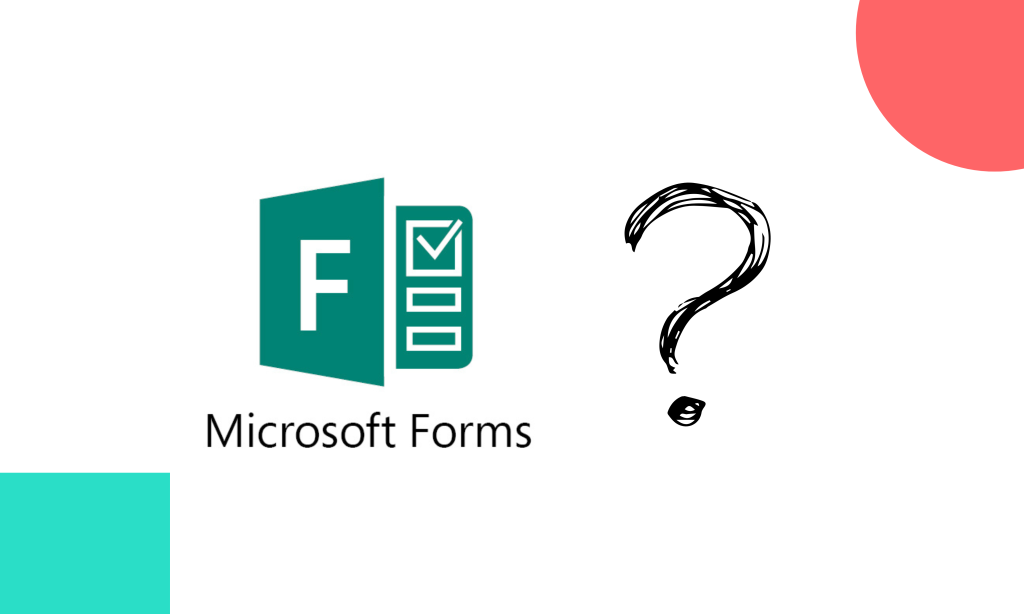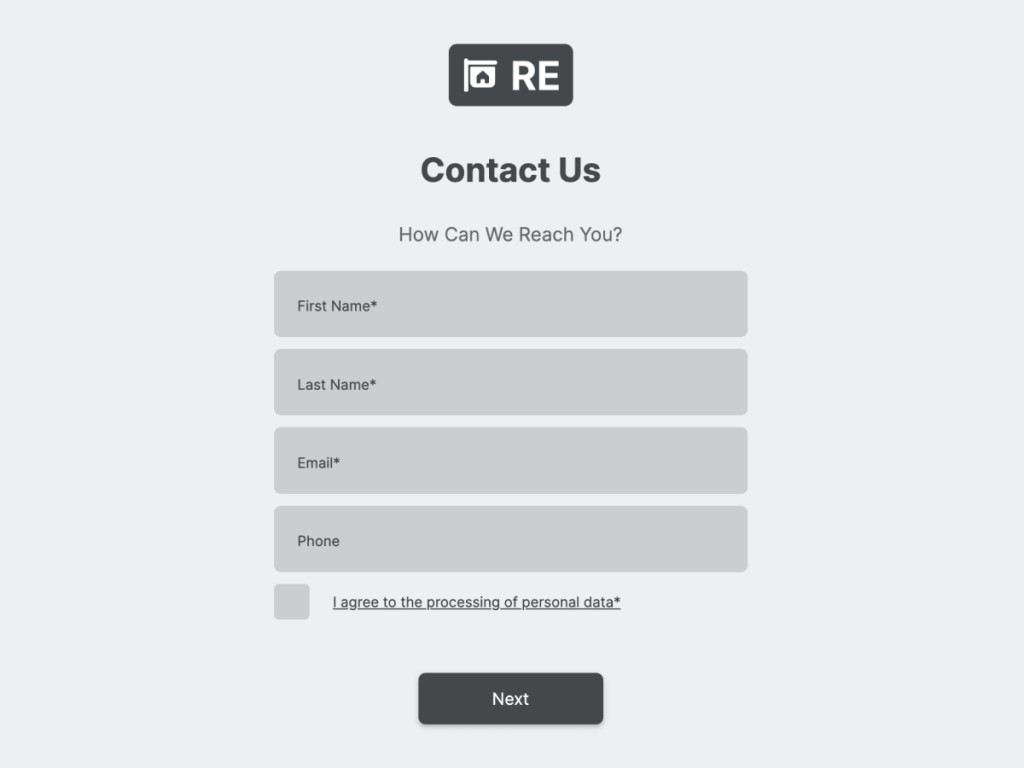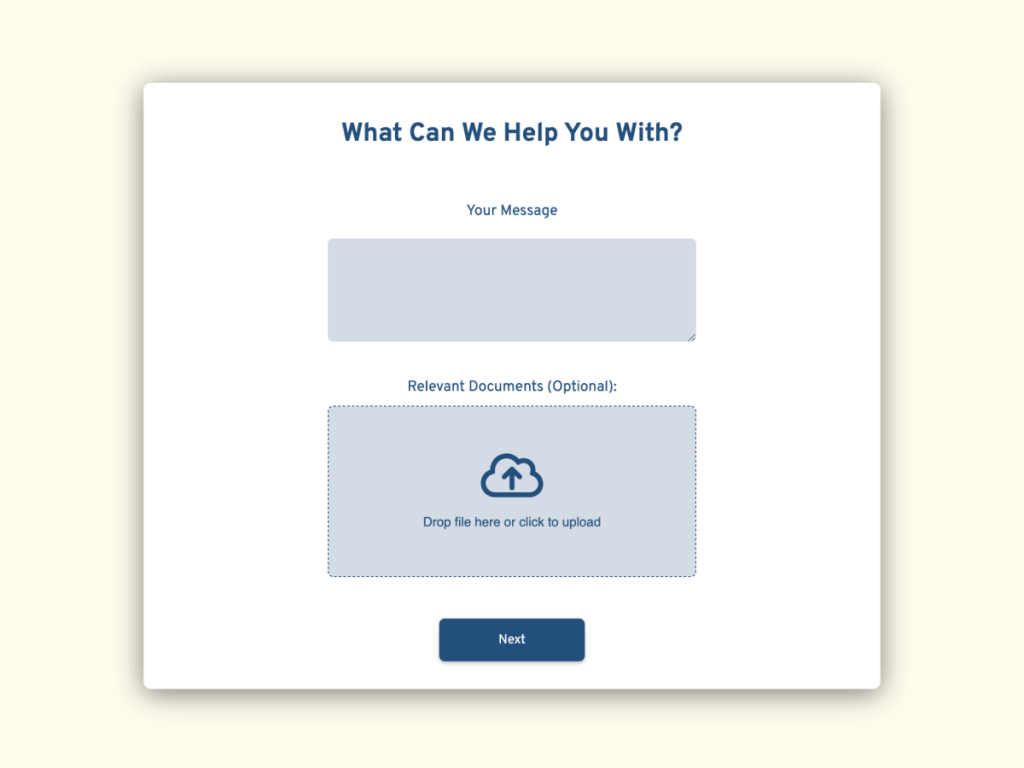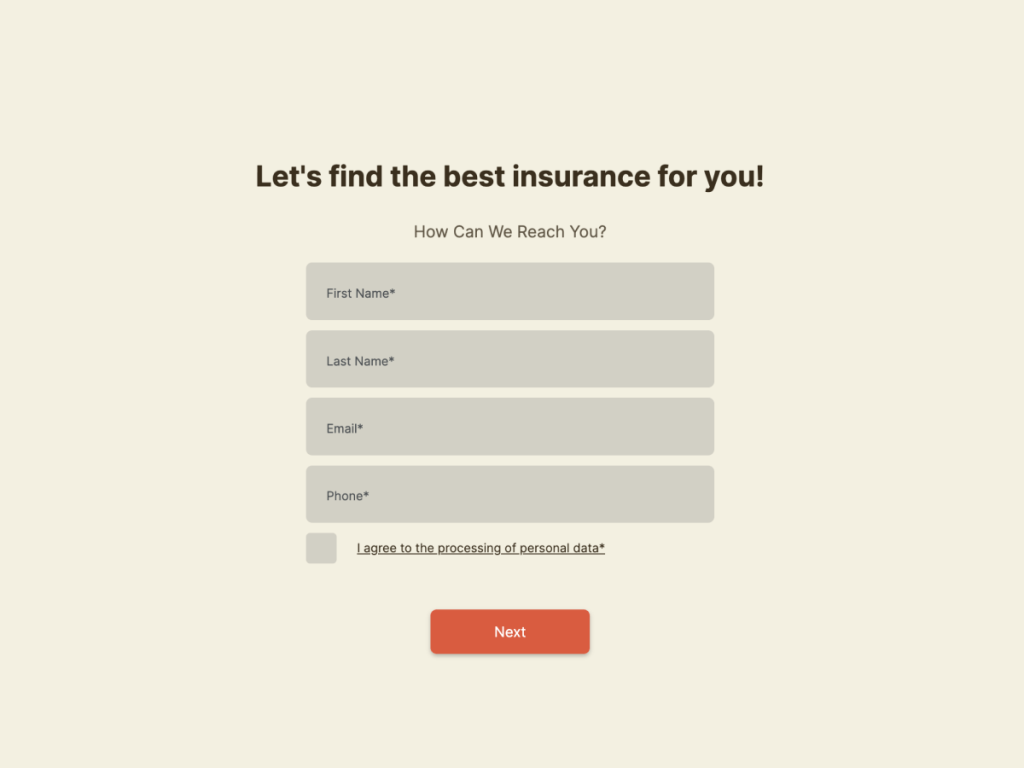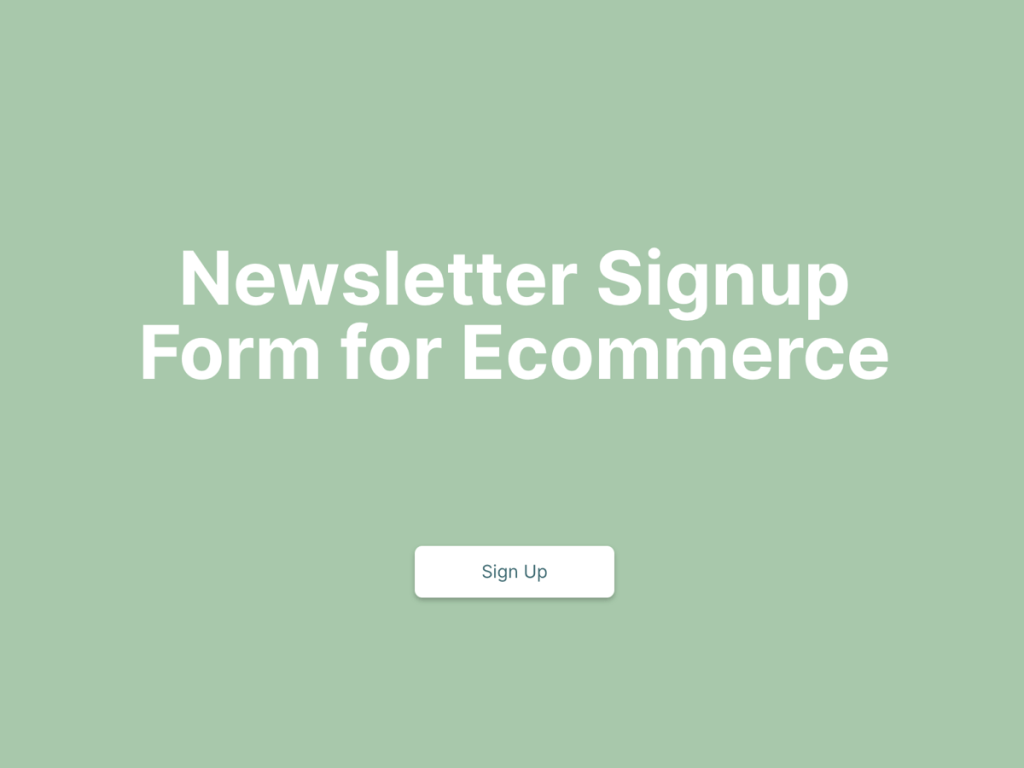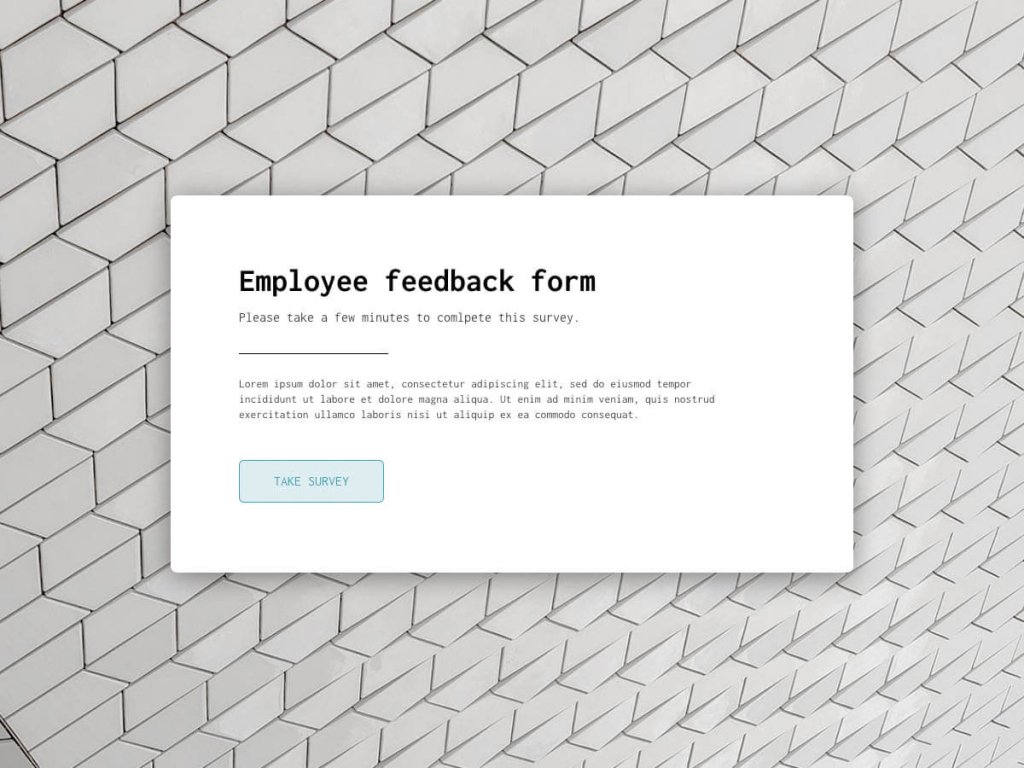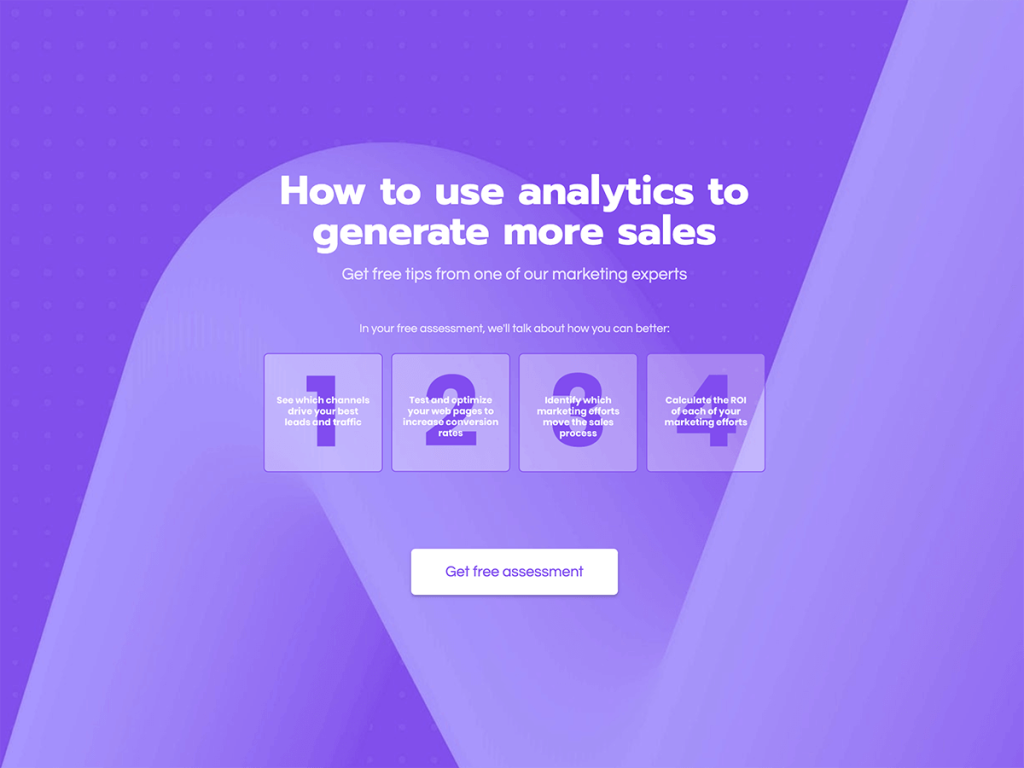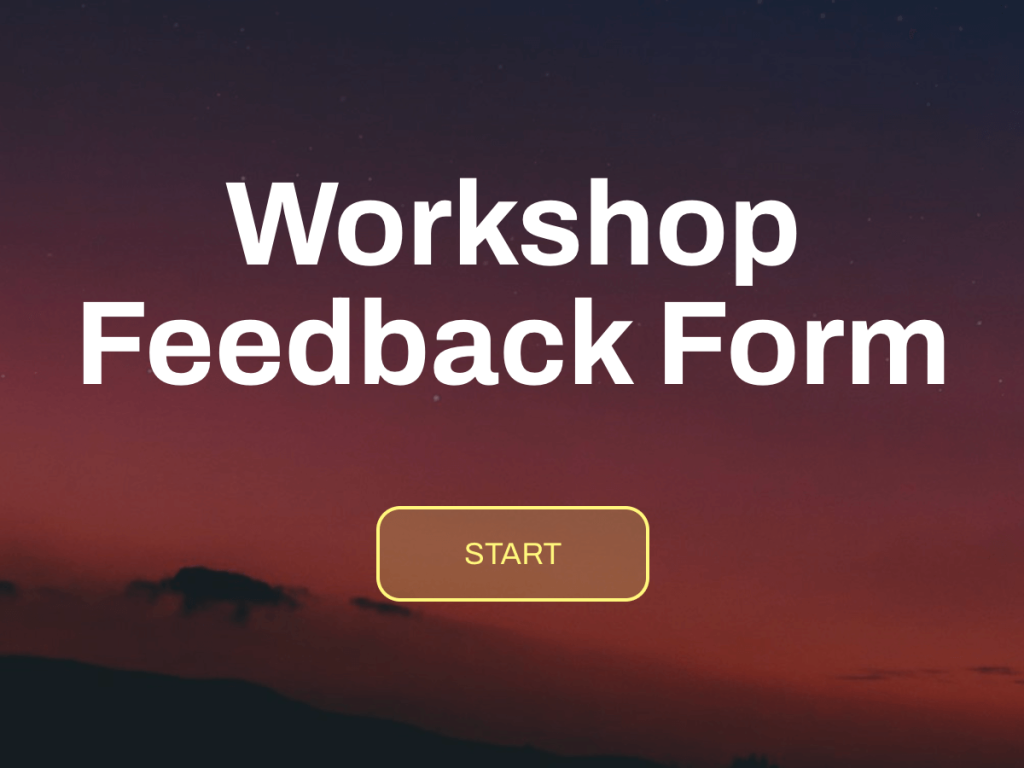Have you ever used a tool that seemed fine until you tried to push it a little further? Microsoft Forms might come to mind.
It’s great for basic surveys, quizzes, and quick feedback forms, but the moment you need something more engaging or complex, it starts to show its limits.
If you’ve been frustrated with its lack of flexibility, you're not alone.
This is where looking at alternatives becomes interesting. Doesn't matter if you’re after better design, more integrations, or deeper analytics—there are plenty of tools out there that can do the job—and do it better.
Let’s take a look at some top alternatives to Microsoft Forms and see how they stack up in 2026.
What is Microsoft Forms?

Microsoft Forms is a straightforward tool in the Microsoft 365 suite, built for creating quick surveys, quizzes, and polls.
Its interface is intuitive—it’s easy to draft questions and share them across platforms. You can use built-in templates or start from scratch to get feedback from your audience.
The tool integrates smoothly with other Microsoft apps, like Excel or Teams, to analyze responses and collaborate.
While it’s great for simple projects, its limited customization and lack of advanced features might not meet your needs if you want more control.
Microsoft Forms Key Features
Included with your Microsoft 365 account, Microsoft Forms offers a straightforward feature set that helps create surveys with ease.
Integration with Microsoft Office 365: Microsoft Forms connects smoothly with Excel, Microsoft Teams, and other 365 apps, making data collection and sharing seamless.
Real-time response tracking: View survey form results as they come in, which allows for quick analysis and adjustments.
Question branching: Create dynamic surveys by adjusting questions based on a participant’s previous responses.
Built-in templates: Choose from ready-made templates to jumpstart survey creation for various purposes.
Multiple sharing options: Distribute your new form via email, link, or QR code for flexibility.
Basic reporting tools: Get straightforward data visualizations with charts and graphs, but limited in advanced analysis.
Security and access control: Manage who can view and respond to your Microsoft form, useful for internal or external feedback.
Mobile-friendly: Surveys adjust automatically to fit any screen, whether it's a mobile device or desktop.
Microsoft Forms offers basic features for everyday use, but its simplicity may not suit those seeking more advanced customization or reporting options.
If you’re already in the Microsoft ecosystem, it's a handy tool to keep things straightforward.

Microsoft Forms Pricing
Microsoft Forms is a part of the Microsoft 365 suite, meaning its pricing is tied to different Microsoft 365 subscription plans.
For personal or small-scale use, Forms is included in the Microsoft 365 Business Basic plan, which starts at $7.20 per user, per month.
If you need more advanced features like desktop versions of Office apps, the Business Standard plan costs $15 per user, per month.
For even more powerful security and management tools, the Business Premium plan starts at $26.40 per user, per month.
These plans make Forms accessible, but for those who need the tool primarily for surveys and quizzes, paying for the entire 365 package might feel like overkill.
Why Microsoft Survey Might Not Be the Best Choice
Microsoft Survey might seem like a quick and easy choice, especially if you're already using other Microsoft tools. But it does have some limitations that might hold you back if you need more flexibility or advanced options.
Customization is limited: The design options are quite basic, which leaves little room for personalization, particularly compared to other survey tools like involve.me.

Lacks integrations: Microsoft Forms doesn’t connect well with many third-party apps, which could slow you down if you rely on external tools for data analysis or workflows.

No e-signature support: If you need signed approvals, you’ll have to look elsewhere. This is something other tools handle better.
Limited question types: Microsoft Forms can feel restrictive when it comes to the range of question types. If you need more than basic formats, this might not cut it.

Data export issues: While you can export to an Excel sheet, more advanced reporting and analytics often require manual work, which can be time-consuming.

Mobile issues: On some phones, uploading files or accessing certain features might not work well, leading to frustration.

Troubles with ownership transfer: If the person who created the survey leaves the organization, transferring ownership can be complicated.

For those looking for more advanced features or deeper customization, Microsoft Forms may not cover all your bases.
However, there are other tools that can easily do that.
Let's take a look at the top four alternatives that blow Microsoft Forms out of the water.
#1 involve.me

involve.me is a highly versatile tool for creating interactive forms, quizzes, surveys, and calculators.
It offers a user-friendly platform with advanced features that make it perfect for both beginners and experts looking to build engaging, visually appealing forms.
Unlike Microsoft Forms, which can feel limited and basic, involve.me goes further with customization and interactivity.
It allows you to create content that not only looks great but also functions well across different needs, like lead generation.
From businesses trying to generate qualified leads to educators building quizzes, involve.me brings creativity and functionality together.
Involve.me Key Features
Drag-and-drop editor: Create forms quickly and easily by placing elements where you want them, no coding needed.
Advanced conditional logic: Tailor the user experience by showing different questions based on previous answers so that the form feels more intuitive.
Payment integrations: You can collect payments directly within your forms through platforms like Stripe, PayPal and Square.
Customizable scoring: Build quizzes with a scoring system that gives users instant feedback, which is ideal for tests and knowledge-based quizzes.
Partial submission capture: Save responses from users who didn’t complete the form, so you don’t miss out on any data.
Custom formulas: Use math functions to create forms that can calculate results, perfect for building price estimators or ROI calculators.
Workflow integrations: Connect involve.me to over 100 apps such as Mailchimp, GetResponse, HubSpot, Pipedrive, or ActiveCampaign.
Create Your Own Online Forms
Get Started with 350+ Templates
Business Consultancy Appointment Template
Contact Form for Real Estate Template
Sales Lead Form Template
Sales Call Scheduling Form Manufacturing Template
Contact Form for Insurance Template
Newsletter Signup Form for Ecommerce Template
Involve.me Pros
Deep customization that allows you to fine-tune your forms beyond what Microsoft Forms offers.
Unparalleled ease of use with no coding experience required.
You can accept payments without redirecting users to a third-party site.
Better reporting tools, with detailed built-in analytics that help you understand how users engage with your content.
A rich library of over 350 templates for custom surveys, giving you a wide range of starting points for various industries and needs.
A partial submissions feature helps capture more data even if users don’t finish the form.
Why You Should Make the Switch to involve.me
While Microsoft Forms handles basic forms and surveys well, involve.me offers a far more extensive and customizable experience.
Its deep integration with payment gateways, advanced analytics, and powerful logic features make it ideal for businesses looking to do more than just collect feedback.
You can build complex interactive content that adapts to the user’s responses, something that Microsoft Forms simply doesn’t match. And then, after you collect responses, you can analyze them thoroughly for the best-possible insights into your answers with involve.me's AI-powered reports.
These are things that Microsoft Forms simply cannot provide.
Involve.me Pricing
involve.me offers a flexible pricing structure to match various needs, from small projects to larger-scale operations.
They have a free plan, which lets you manage up to three live projects and accept 100 submissions each month—ideal for those just starting out.
For those looking for more, the Basic plan starts at €29 per month, offers 1,000 submissions, and allows the sending of 3,000 email invites monthly. It supports five live projects, includes data exports, 50 AI credits, and allows for one custom domain.
Stepping up, the Pro plan costs €59 per month. It gives you 5,000 submissions, 15,000 email invites, and expands your projects to 15 live ones.
You also get two custom domains, and deeper integrations like HubSpot and Pipedrive, which help streamline workflows. Partial submission views are also included, so you can track those who don’t finish.
The Business plan, at €129 per month, allows for 30 live projects and gives you 15,000 submissions and 45,000 email invites each month. You’ll get advanced tools like Salesforce integration, 200 AI credits, and Net Promoter Score® tracking.
At the top end, the Agency plan comes in at €199 per month, designed for businesses managing up to 100 live projects with 30,000 submissions and 90,000 email invites monthly. It’s ideal for agencies needing client workspaces, e-signature collection, and detailed funnel analytics.
Switching to involve.me means upgrading from basic form-building to an all-in-one tool for creating interactive, beautiful, and efficient content that does more than just gather information.
It helps you understand your audience better and generate more leads while delivering a top-notch user experience.
Don't wait.
#2 Jotform

Jotform is a well-known platform for building forms, quizzes, and surveys. It’s widely appreciated for its intuitive interface and variety of templates.
While it is a reliable choice for basic tasks, some users might find it lacking in customization and analytics compared to other tools like involve.me.
Jotform Key Features
Create forms with various field types, such as a text box, checkbox, or drop down list.
Connect with PayPal, Stripe, and Square to process payments directly through your forms.
You can show or hide form fields based on previous responses, though it lacks more complex logic rules compared to involve.me.
Jotform provides over 10,000 pre-built templates, covering everything from simple surveys to event registration, though customization options are limited to basic visual tweaks.
Evaluate responses with its analytics features.
Jotform integrates with apps like Google Drive, Dropbox, and Zapier, but it lacks direct CRM and advanced marketing tool integrations that involve.me supports.
You can change colors, fonts, and add logos, but more advanced features like creating fully branded experiences or adjusting individual form components are missing.
Jotform Pros
Easy to use, makes form creation and gathering quick feedback fast for beginners.
Broad template library covering various needs.
Simple payment processing integrations.
Flexible data export options (Excel, CSV).
Jotform Cons
Limited customization for complex forms.

Analytics lacks depth, especially compared to involve.me’s funnel tracking and user interaction data.

Conditional logic is basic and doesn’t allow for more advanced scoring outcomes like creating your own scoring formula.
Does not support multi-outcome projects, restricting how forms react to user inputs.
Jotform Pricing
Jotform offers a free version with limited submissions and features. Paid plans start at $39/month for up to 1,000 submissions. Higher-tier plans unlock more submissions, additional forms, and advanced features.
Jotform serves well for those needing straightforward, no-frills form creation.
However, when compared to involve.me, which offers richer customization, detailed analytics, and advanced conditional logic, Jotform can feel a bit basic.
If you need more interaction and a modern design, involve.me is the better choice.
#3 SurveySparrow

SurveySparrow is an online survey tool known for its conversational approach, making feedback collection more engaging.
It supports multiple survey types, from customer satisfaction (for example, asking if product tour software would be appreciated) to employee engagement, with integrations across platforms like Slack and Google Sheets. Its chat-like interface is its standout feature.
But, it also comes with some limitations, particularly for users who want deeper customization or analytics without spending on higher plans.
SurveySparrow Key Features
Surveys are displayed in a chat-style interface that makes the experience feel like a conversation rather than a typical form.
You can distribute surveys via email, SMS, or social media platforms to reach a wider audience.
A dashboard provides instant insights into survey responses as they are collected, giving a quick overview of data trends.
Surveys can be created in multiple languages, which helps connect with audiences globally.
Automates the feedback process with features like reminders and thank-you notes, which helps to close the feedback loop without manual follow-up.
SurveySparrow integrates with popular platforms such as Slack, Google Sheets, HubSpot, and many more like Woodpecker.co via Zapier, which helps manage responses and insights within your existing workflow.
Provides a variety of pre-built survey templates, which speed up the creation process while maintaining a professional look.
SurveySparrow Pros
Engaging, chat-like format that encourages more natural feedback.
Flexible sharing options across multiple channels.
Easy integration with popular third-party tools like Slack and Google Sheets.
SurveySparrow Cons
Limited customization, especially in lower-tier plans, feels restrictive.

Detailed analytics are lacking and sometimes inconvenient compared to tools like involve.me.

The jump in pricing between plans is steep for smaller teams.

Surveys can occasionally experience glitches that interrupt data collection.

SurveySparrow Pricing
SurveySparrow starts at €39/month for basic features, with higher-tier plans offering more advanced features and security at significantly higher prices.
While SurveySparrow delivers a conversational experience, it falls short in flexibility compared to involve.me, which offers more customization and advanced analytics at similar price points.
If interaction and design matter, involve.me is the stronger contender.
#4 Paperform

Not every form builder is created equal, and Paperform highlights this well. With a text-based interface that resembles writing a document, it appeals to users seeking a simple tool for creating forms, landing pages, and surveys.
Paperform works well for basic use cases like collecting payments or setting up registrations, but for those looking for more, it has its limitations.
Paperform Key Features
Text-based editor for creating forms as you type.
Multiple payment gateways like Stripe, PayPal, and Square.
Customizable templates to match branding.
Conditional logic for dynamic questions.
Integrations with tools like Zapier, Slack, and Google Sheets.
Upload files for gathering documents or images from users.
Real-time form analytics to track submissions.
Paperform Pros
Easy-to-use interface, especially for beginners.
Customization options with themes and branding.
Integration with payment platforms makes it ideal for e-commerce forms.
Multiple templates to choose from for different business needs.
Paperform Cons
Lacks advanced data analysis features like funnel analytics, which makes it harder to dive deep into form performance.
Limited design flexibility compared to involve.me, which offers more customization options.
Pricing can escalate quickly for businesses requiring higher response limits or more users.

Absence of a drag-and-drop builder can make creating complex forms time-consuming.
Paperform Pricing
Paperform’s pricing starts at $29/month for up to 100 submissions. The Pro plan costs $49/month for up to 1,000 submissions and 3 users. Annual pricing offers some savings.
Tool | Best for | Standout strengths | Key limitations vs others | Starting price (as stated in your draft) |
|---|---|---|---|---|
Microsoft Forms | Quick internal surveys/quizzes in Microsoft 365 | Tight Microsoft 365 integration (Excel/Teams), simple setup, basic branching | Limited customization, fewer integrations, no e-signatures, basic analytics | Included in Microsoft 365 (Business Basic $7.20/user/mo) |
involve.me | High-converting, branded multi-step funnels + surveys/quizzes/calculators | Drag-and-drop builder, advanced conditional logic, payments (Stripe/PayPal/Square), lead scoring, partial submissions, formulas/calculations, 350+ templates, deeper analytics | More feature-rich than Forms → can feel like “more tool” than you need for simple internal polls | Free plan; paid from €29/mo |
Jotform | General-purpose business forms (registrations, payments, approvals) | 10k+ templates, payments, lots of fields/widgets, integrations via Zapier + common apps | Customization/logic and analytics depth can feel limited vs funnel-first tools | Free plan; paid from $39/mo |
SurveySparrow | Conversational surveys + multi-channel distribution | Chat-style surveys, multi-channel sharing, automations, integrations, templates | Customization + analytics depth can feel limited on lower tiers; pricing jumps | From €39/mo |
Paperform | Document-style forms + content-heavy pages | “Doc editor” experience, payments, logic, integrations (Zapier/Sheets/Slack), file uploads | No true drag-and-drop; weaker funnel-style performance analytics; pricing can scale quickly | From $29/mo |
Finding the Right Form Builder for 2026: What Truly Matters
So, where does this leave you?
If you're only handling basic forms and don't mind some limitations, Microsoft Forms could do the trick.
But, let’s be real—if you're aiming for something more interactive, personalized, and with better control over data, it falls short. You’ll outgrow it sooner or later.
Tools like involve.me and others we’ve discussed provide more advanced features that can truly change the way you collect and manage data.
Ask yourself: do you want to just gather responses, or are you looking for tools that can truly help you understand and engage your audience?
The right choice will depend on what you’re trying to achieve, but one thing is clear—better options are out there.
Switch to involve.me and start building forms, quizzes, surveys, and calculators that not only capture data but also elevate your interaction with your audience.
